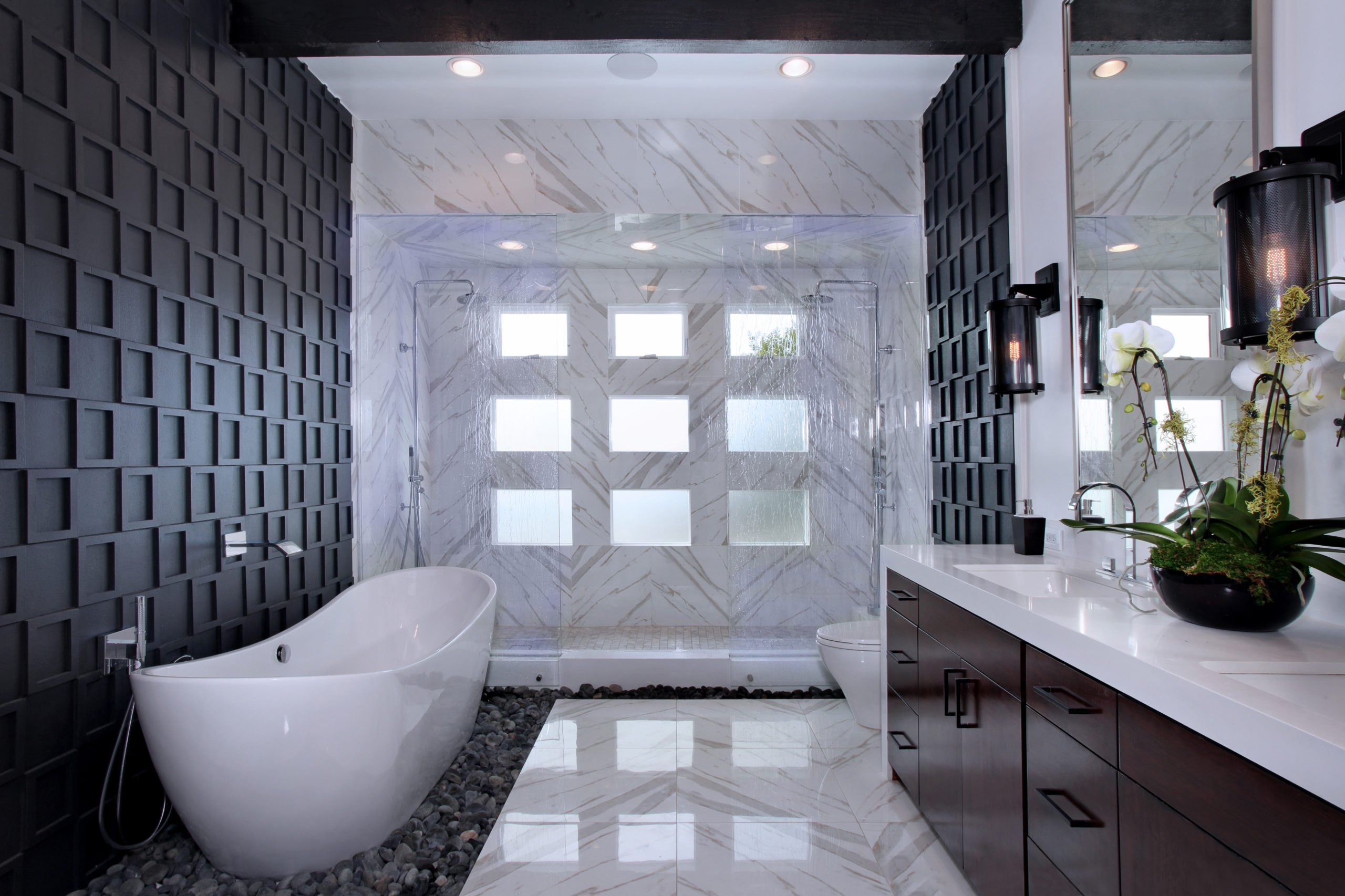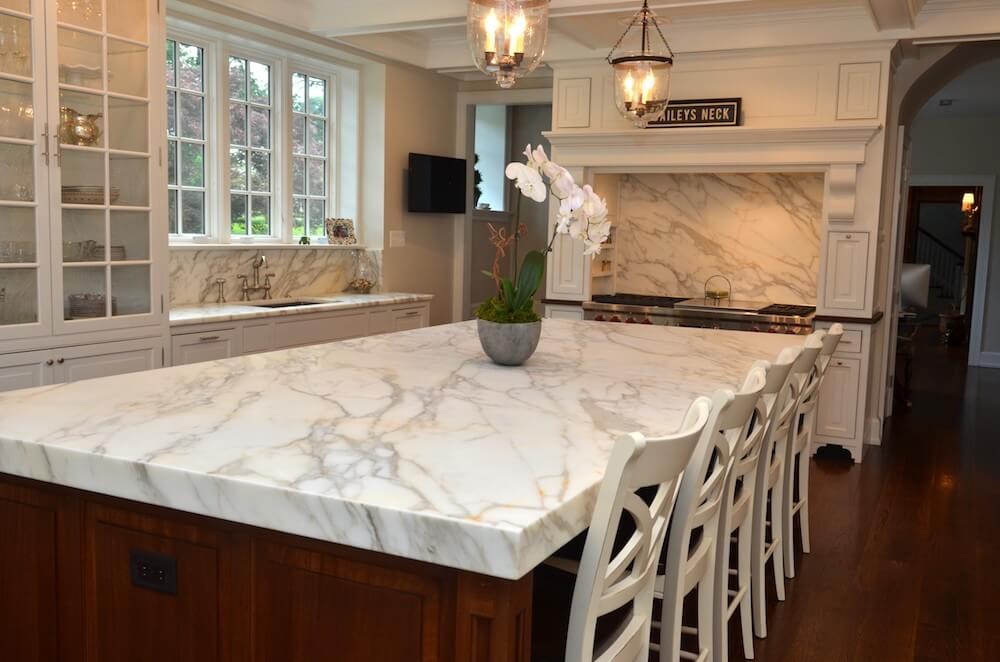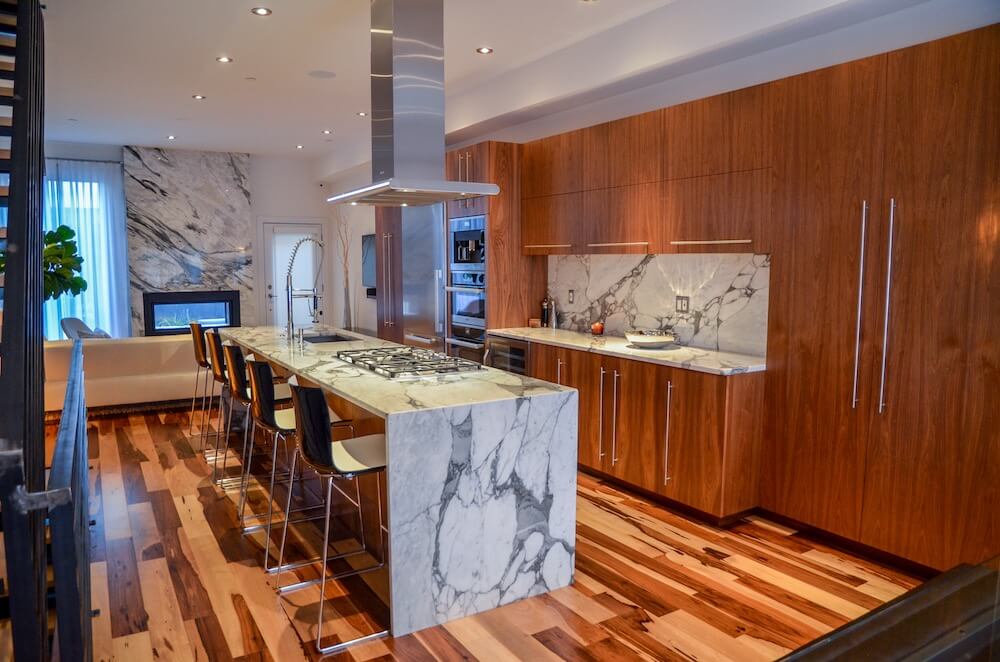Faux Marble Trade-Offs to Understand When Selecting Countertops
Designers have been using marble to enhance their interiors for centuries. The highly valued natural stone is distinct in that it has a unique crystalline structure with natural veining. Calacatta marble slabs are the highest quality as their production is limited and controlled. This exclusive stone is quarried in Carrara, Italy, and is recognized as top of the line.
There are more affordable variations of authentic marble, like Carrara, for the more budget-conscious shopper, which you can read more about here.
There are a few different ways to recreate the look of marble without the high price tag. Let’s talk about faux marble and cultured marble and the tradeoffs when selecting countertops.
Faux Marble Countertops
One way to give your countertops a marble-inspired look is to paint it on. With this faux marble DIY method, a painting technique using materials like a feather and sea sponge is used. While this approach might sound like a price advantage, it has some weaknesses.
One, it is typically done on laminate – which is no longer a preferred surface material due to its susceptibility to heat damage and scratches. Two, those that choose faux marble countertop kits have a labor-intensive journey ahead of them. This House Beautiful article explains the process. You can expect to work with primer, paint, epoxy resin, and a grey veining mineral while trusting the design to your own artistry. These faux marble kitchen countertops will take over a week for a full cure, and you can never use anything stronger than soap and water to maintain them. It is simply impractical and messy.
The result is a duller surface that lacks uniqueness, depth, and natural beauty.
Cultured Marble
Cultured marble can be considered a ‘faux marble’ too, but it has a slight advantage over a painted surface. Cultured marble uses various stone particles, pigments, and resins to simulate marble and other natural stones. The slabs are made from molds and can be either a polished or honed finish. These surfaces are nonporous making them low maintenance. Basically, it is a solid surface and can be made to order.
But cultured marble has its disadvantages, as well. It has a greater susceptibility to scratches and stains; it sometimes has color consistency issues; and it often has quality control issues where some manufacturers use questionable fillers in the mixture in order to cut their costs.
And Then, There is Quartz
Quartz is a solid alternative to marble if you’re looking for a slightly more affordable option that is still of high quality. Quartz slabs are closer to natural than the two alternatives as they are blended at a ratio of up to 90% quartz mixed with polymers and pigments. The techniques used to engineer these countertops and other surfaces allow for a closer resemblance to natural materials like marble.
Marble, Though
The thing about real marble, though, is that each slab is completely unique. Its classic elegance can not be reproduced through paint or a mixture of natural stones. If you’re in the market for marble or marble-inspired quartz surfaces, visit one the Colonial Marble & Granite showroom locations:
- King of Prussia, PA
- Philadelphia, PA
- Harrisburg, PA
- New Castle, DE
- Edison, NJ





